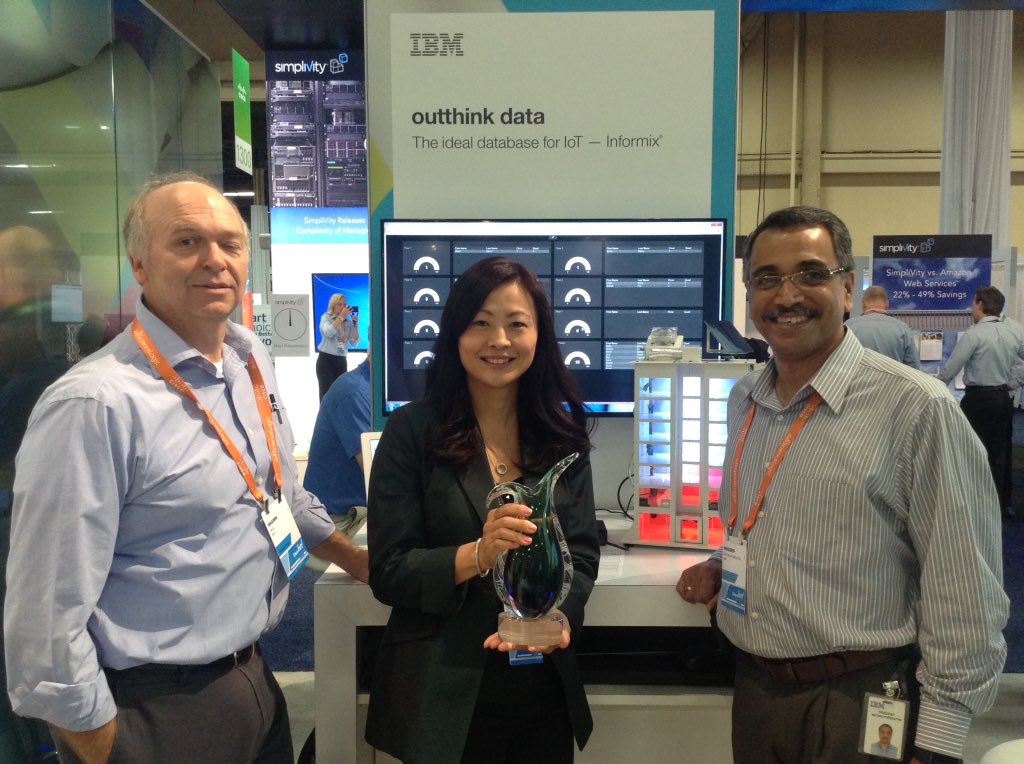Yesterday, during Cisco Live – Cisco’s big yearly event, Informix was named “Best IoT Database” by Cisco.

It may not sound like a big deal at first, but the IoT (Internet of Things) business is growing everywhere. It made sense to have a dedicated database in this field, which has specific needs. Informix remains a tremendous OLTP (OnLine Transaction Processing) database, as well as a fantastic analytic foundation, even more since IWA (Informix Warehouse Accelerator). It is a smart move from IBM to push this flagship database in the IoT world.
Things have specific needs.
The thing itself, like your Fitbit ou Withings watch, collects data. It stores them locally but cannot do much with it. It needs to transmit them somewhere, where some analytics can be performed. This is the role of the gateway, which can be your phone or a separate device like a Raspberry Pi (for example). The gateway has more data crunching power than the thing, so it can perform some operations, this is what we call analytics at the edge.
The benefit of doing so is to avoid to have to send all those data in a pipeline in a datacenter, eliminating transfer and latency. Informix is perfectly suited for this operation, but so are some other databases; however Informix has a great competitive advantage: it is the same database engine that will scale to the datacenter level.
Another need of the Thing is security. The data transfer between the thing and the gateway is secure, most of the time in BLE (Bluetooth Low Energy), WiFi, or over the wire in more industrial/protected environment. Easy to crypt, ease to secure, low risk as well as it is mostly reporting of raw data – it does not mean it’s ok to lose them, but they are less critical.
The next step is to get the data from the gateway to the datacenter (or call it cloud, private, public, or an hybrid kind). It seems easy, but here the data need to be enciphered, there must be a trust between the gateway and the datacenter. Plumbing is needed… unless you use Informix, which can securely take care of that.
It looks like Cisco (and a few others) has understood this huge benefit. Congratulation to the Informix teams at IBM!

